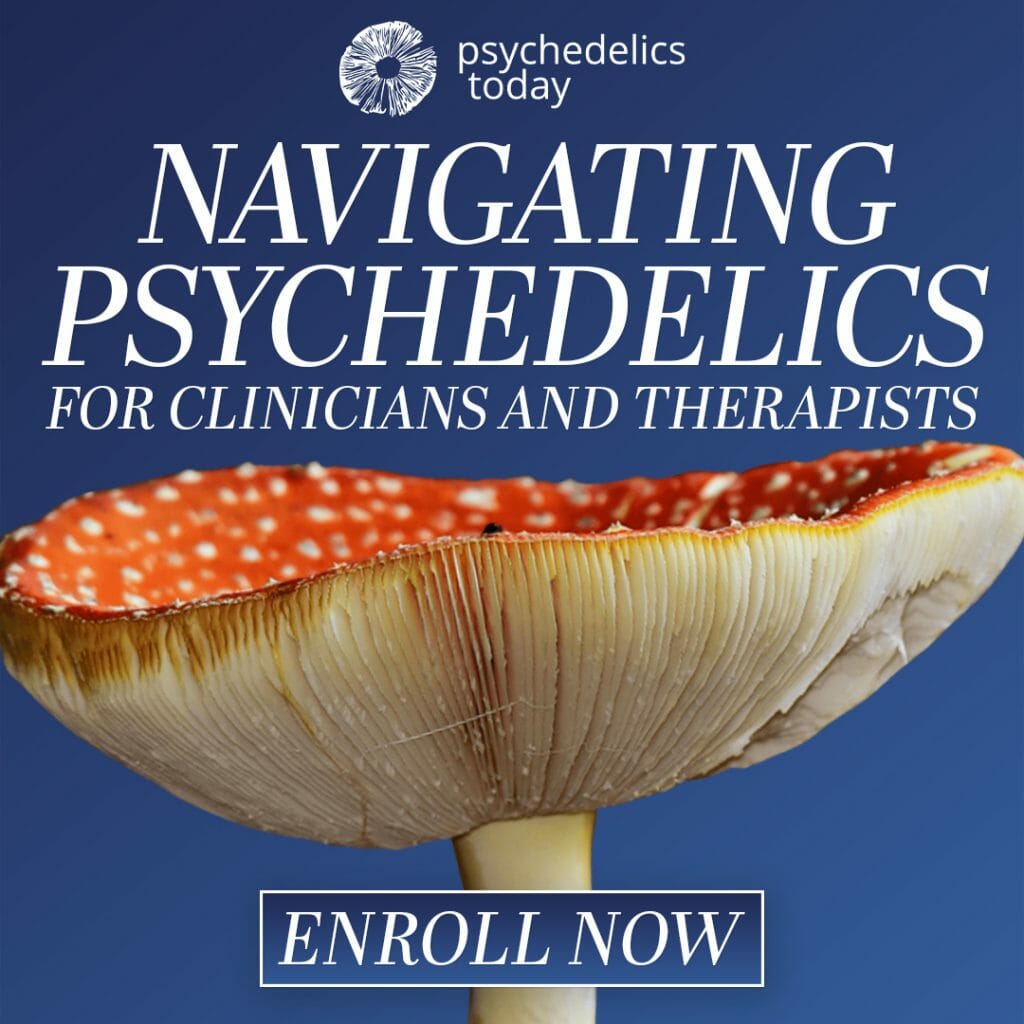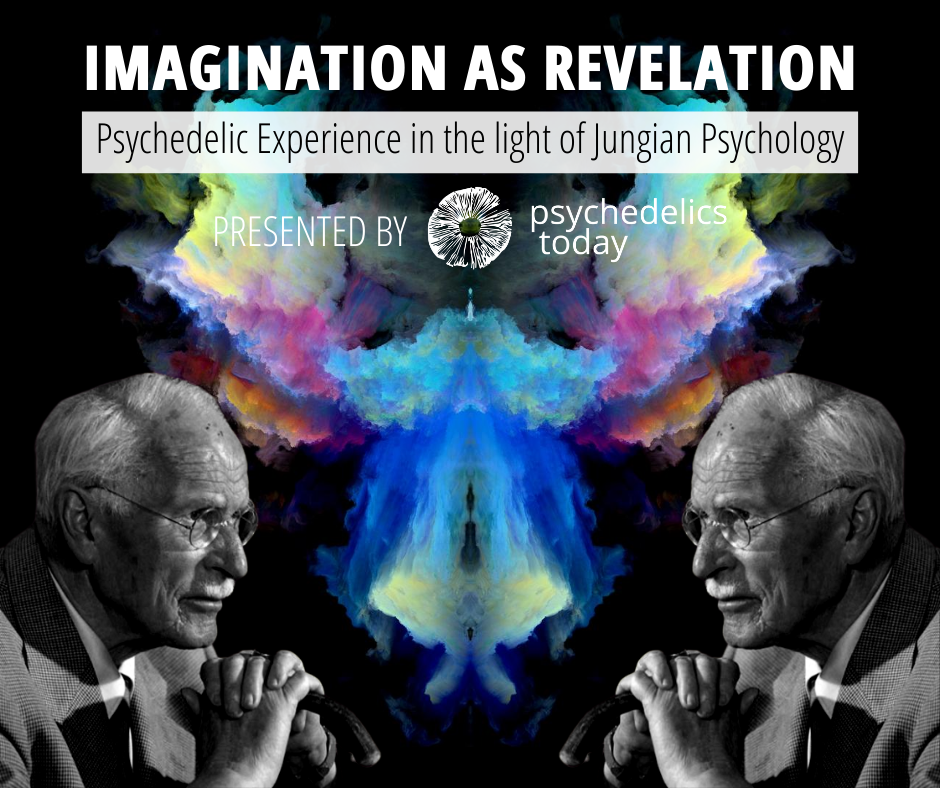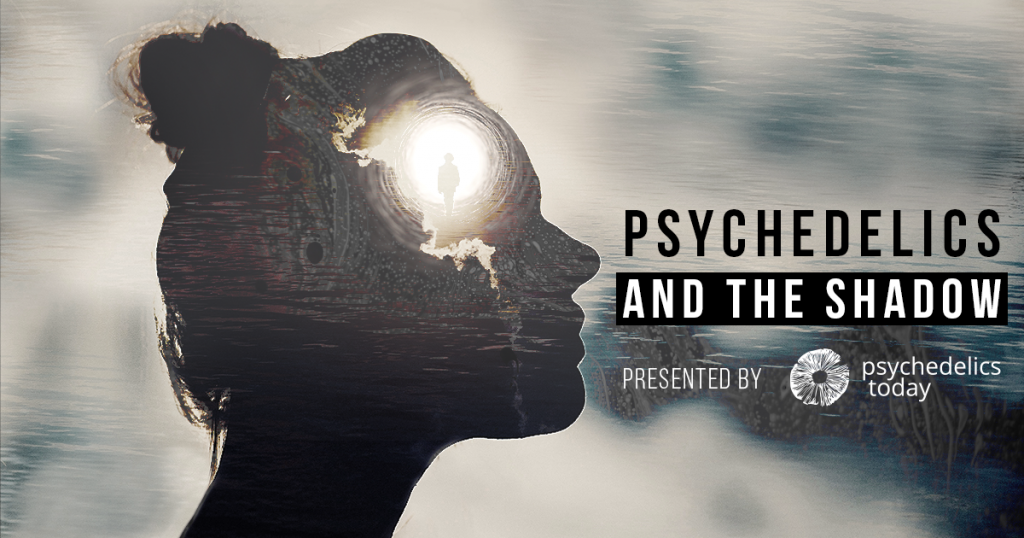By Sean Lawlor
Could taking and integrating ketamine in groups make psychedelic therapy more accessible?
As psychedelic-assisted therapy continues marching into the mainstream, the issue of how absurdly expensive the treatment is continues to present countless difficulties. Of the strategies practitioners are taking to circumvent this problem, one of the most promising—and underreported—approaches is offering psychedelic-assisted group therapy.
Despite promising preliminary research using psilocybin in small groups to treat depression in cancer patients and MDMA-assisted therapy for couples where one partner has PTSD—and ignoring the fact that psilocybin-containing mushrooms are traditionally taken in group ceremonies in Mexico—ketamine is the only psychedelic medicine that’s already legally used in psychedelic-assisted therapy. Let’s take a look at the emerging world of group ketamine-assisted psychotherapy, its benefits as well as drawbacks.
Group Ketamine-Assisted Psychotherapy
Though traditionally used as an anesthetic, ketamine, an Essential Medicine of the World Health Organization, is now widely being prescribed off-label by qualified practitioners to treat a host of mental health diagnoses, including depression, addiction, PTSD, and chronic pain.
Ketamine-assisted psychotherapy—“KAP” for short—is a growing mental health treatment option for people who meet diagnostic criteria. In line with most psychedelic therapy protocols, KAP involves a sequence of medicine sessions, in which clients take the substance with the mental health professional present, and sober therapy sessions referred to as “preparation” and “integration.” Through KAP, many people are finding healing where prevailing mental health treatments have fallen short.
Also in line with most psychedelic therapy protocols, KAP is really freaking expensive.
Though ketamine’s effects are relatively short-acting compared to MDMA and psilocybin, therefore requiring fewer therapist hours to pay for, sessions still cost several hundred dollars. Ongoing treatment can quickly climb into the thousands.
Even ketamine “infusion centers,” which involve no therapy, tend to charge $400-$600 for each intravenous infusion—and they typically make it clear that lasting symptom relief only occurs after several rounds. At such centers, folks may receive infusions in group rooms, but oftentimes it’s more akin to the way you’d find yourself sitting on a sterile lab chair next to some stranger at a plasma donation center, while someone who doesn’t want to hear about your problems sticks a needle in your vein and leaves. While this might help some folks, costs remain abundant.
Group ketamine-assisted psychotherapy is different. Though there is currently no published research on group KAP’s efficacy, ketamine’s legality via prescription allows therapists to smoothly translate the modality into groups. As group members can then split the price of the therapist’s time—the largest contributor to high costs of treatment—the overall cost decreases significantly.
Raquel Bennett, Psy.D., is a psychotherapist and researcher who specializes in ketamine-assisted psychotherapy, who also teaches our masterclass on ketamine ethics as part of our Navigating Psychedelics for Clinicians and Therapists course. She practices in Berkeley, CA, where she runs the KRIYA Ketamine Research Institute. Bennett has been studying the therapeutic properties of ketamine since 2002, when a personal encounter with the medicine sparked her awareness of its powerful antidepressant properties. That was over a decade before infusion centers started popping up, well before “ketamine-assisted psychotherapy” was a term.
“I was studying this long before it was cool,” Bennett tells Psychedelics Today with a laugh.
Motivated by a desire to lower cost and increase accessibility, Bennett began facilitating ketamine groups with her medical partners in 2016. The same motivation also prompted the Wholeness Center, a leading ketamine therapy clinic and psychedelic research site in Colorado, to offer ketamine therapy groups as well. Scott Shannon, M.D., who founded Wholeness in 2010, teamed with colleague Sandra Fortson, LCSW, to offer the clinic’s first ketamine therapy group last year.
“One of the most prominent reasons why I endorse and am exploring group therapy is that it solves one of the greatest drawbacks of the psychedelic model right now, which is that psychedelic therapy is a treatment of the affluent,” Shannon tells Psychedelics Today. “Instead of offering KAP for three or four hundred dollars a session, group therapy brings the cost down closer to a hundred dollars a session, which is a big difference.”
Fortson elaborates on how significant that difference can be: “Clients are looking at a savings of almost 50% for a 5-week KAP group curriculum—including medical clearance, intake, 3 experiential sessions and final integration session.”
At the time of writing, Shannon and Fortson have facilitated two groups, each spanning five sessions. They are currently planning for a third and foresee group KAP as an important option in the Wholeness Center’s future psychedelic therapy offerings.
What Group Ketamine Therapy Looks Like
Bennett breaks down the process of ketamine-assisted psychotherapy into four essential steps:
- Patient selection
- Patient preparation
- The medicine session
- Follow-up care
At the preliminary level of patient selection, legal concerns must be taken seriously. “In order to participate in a ketamine group, you still have to fully meet the criteria for a clinically necessary treatment,” Bennett explains. “It’s currently not legally defensible for a person to participate in a group just because they want a ketamine experience.”
Both Wholeness and KRIYA use a cohort model where the same participants come together at scheduled times, and their series of sessions begins and ends together. Throughout that process, the group engages in both ketamine and non-ketamine sessions together, the latter of which involves working through their challenges and implementing insights into their lives with the support of the therapist(s) and fellow group members.
Shannon and Fortson have limited their cohorts to four people due to COVID-19 restrictions and social distancing protocols. Going forward, Shannon envisions groups of eight participants, which would require two therapists present. At KRIYA, Bennett has found that five or six participants with two clinicians is an optimal ratio.
At the Wholeness Center, participants sit on bean bag chairs in socially-distanced corners of a large room. During the ketamine sessions, members are given eyeshades along with their measured doses. Specifically-curated music plays through speakers, and Shannon and Fortson remain present in the space, supporting as needed and facilitating conversation if appropriate—and if possible, for at higher doses of ketamine, folks often temporarily lose their capacity to form words with their abruptly-nonexistent mouths.
There are three primary routes of administration in ketamine-assisted psychotherapy:
- Lozenges (held in the mouth)
- Intravenous (IV) administration
- Intramuscular (IM) injection
All three require an MD’s prescription, and the latter two require a nurse or doctor for administration. Dose ranges vary significantly in each route—though low-dose sessions are often orally administered, while high-dose sessions typically come through IV or IM.
Each route yields a unique experience in terms of onset, depth, length, and intensity. Different routes of administration and doses are associated with the treatment of different conditions—in individual KAP, for example, high-dose IM treatment is often regarded as uniquely effective for suicidality. At KRIYA, doses and routes of administration are determined based on individual and group assessments.
“As providers, we need to be clear about what effects we are going for, and then make our dose recommendations based on that,” says Bennett. “That varies depending on the needs of the group and what we’re trying to accomplish.”
Regardless of dose and route of administration, ketamine sessions at KRIYA follow a consistent protocol. “Our ketamine groups include an opening ritual, time for sharing, the ketamine administration, quiet rest, and a potluck meal, with more time for sharing,” Bennett explains.
The frequency of group sessions at KRIYA varies. “For some cohorts, the participants come once per month for four consecutive months. In other cohorts, the participants come once per quarter, four times in a year,” describes Bennett.
A capacity for fluidity and openness is called for on the part of the therapists, along with a willingness to learn from the groups and attune to the members’ needs.
“Sometimes, we ask people to share something that feels heavy on their heart, and that usually opens a conversation,” Bennett says. “Then, we move to something they feel grateful for—it’s very helpful to invite people to enter a positive mindset as the medicine is wearing off, because that then seems to linger. Other times, we are quiet and simply hold the space as people spontaneously work on what they need to work on.”
At the Wholeness Center, ketamine groups have thus far followed fixed, five-session structures. Shannon details the process:
“We start with a prep session, where we get to know each other and build rapport. The second session is a low-dose oral experience, which doesn’t put people in a full, dissociated state. It reduces their inhibitions, opens up their heart; what we find is that people actually bond very well during that session. They feel safe and secure. In the third session, which is a moderate-to-higher-dose oral session, they begin to have deeper, fuller psychedelic experiences. We really encourage people and give them the instruction that they can come in and out at will. If they want to come into more consensual reality, they can talk with us, connect with us, or their peers even—or they can go inside if they’re feeling pulled to explore.
“That third session begins to give them the taste of the more full-fledged psychedelic experience,” Shannon continues. “In the fourth session, they have a high-dose IM experience, where they’re going to fully dissociate and go into their personal inner space. People reenter the group space at various times as they’re ready and able, and come back and process it. Then, the fifth session is an integration session.”
Unlike the varied frequencies of KRIYA’s groups, the Wholeness Center’s groups meet once a week. Shannon is not attached to that model and expresses that future groups may follow different formats. Likewise, Bennett remains open to new possibilities. Even after all her years of ketamine research, she reflects, “We are always learning and trying things to find the most effective strategies.”
How to Establish a Safe Group Culture
For an effective group, a culture of safety and trust must be established. One way of doing that is to create “homogenous” groups, where all members share common struggles, such as depression or anxiety. The Wholeness Center, for instance, is in the process of creating a KAP group to treat PTSD experienced by COVID first responders, as well as a group for alcohol addictions.
At KRIYA, Bennett is not attached to homogeneity as a necessity, yet she recognizes that disregard for commonality among group members can be detrimental to the group’s safety, and therefore efficacy.
“It is possible to have somebody in the group who is on such a different page than the other folks that it really puts the group out of balance,” she explains. “We try not to do that.”
Bennett circumvents issues related to group imbalances by focusing on preliminary assessment. She describes the assessment process as an under-regarded component of psychedelic healing, the “magic for helping people to get better in the fastest and most cost-effective way.” If therapists take a first come, first serve approach to their groups, imbalances are bound to emerge, negatively impacting trust and safety.
“Not everyone is a good candidate for group treatment,” Bennett candidly states. “Ketamine is a fickle medicine. People need to feel physically and emotionally safe in order to have big and beautiful and expansive experiences. They need time to relax into the space and develop trust with us.”
For example, Bennett has found that people with complex trauma are better suited for individual work, noting that these folks “are often better served by having the individual attention of the therapist.”
Shannon underscores the necessity of a detailed intake process to ensure safety. When group safety and assessment are sufficiently prioritized, however, he has found that ketamine presents very little risk to individuals or groups in a therapeutic context.
“People are screened ahead of time for concerning medical or psychiatric issues,” Shannon says. “We haven’t seen any safety issues in our groups so far. I think that reflects our experience with KAP in general—that it’s a low-risk, quite safe medical process.”
For folks who have been properly screened and assessed, Shannon has found that the drop in individual attention from the therapist that groups entail does not negatively affect the healing process.
“I think we overrate the value of having an expert in the room, and we underrate the importance of connection and community in our current mental health paradigm,” he reflects. “My observation is that although the attention of the practitioner is more divided in a group, that is more than enhanced by the sense of community and safety and support that comes with it.”
Healing in Community
On top of assessment, non-ketamine preparation sessions help establish the safe and supportive group environment.
“People spend time getting to know each other in the preparation sessions before the medicine is introduced,” Bennett explains. “We’re not just throwing people in and shooting them up. That would be totally unethical.”
The cohort model contributes to participants’ sense of safety through rapport and consistency. When safety is established, Bennett has found that groups are not only consistently effective, but offer a host of benefits she did not anticipate.
“In individual treatment, people often felt very alone, that they were the only person on earth dealing with whatever problem they were living with,” she explains. “In the group, people quickly found that there were other people who had similar issues and challenges. That in itself is healing.”
Shannon and Fortson have observed the same trend. Fortson shares, “While it is difficult to explain, there is something about the sense of connection and support that is fostered in a group environment, specifically as it pertains to KAP, that seems to greatly expand the therapeutic benefit experienced by participants.”
Shannon notes this “enhanced response” is influenced by participants’ magnified expectation of hope, as well as something more primordial.
“With the pandemic, and really just in modern society, one of the major plagues we’re facing is a sense of disconnection, isolation, and removal from our social roots as herd animals,” he reflects. “A primary reason I like group therapy so much is that it really makes use of the power of community and group process.”
This unmeasurable component of community healing is emerging as a trend of group psychedelic therapy. The Forbes article linked in the introduction indicated that the cancer patients who receive psilocybin treatments together “frequently develop a sense of community and mutual support that can enhance their recovery and overall well-being.”
Implications of Ceremony in the West
An intriguing argument sometimes leveraged on behalf of group psychedelic therapy hinges on its potential correlation to group entheogenic healing ceremonies practiced by countless cultures for millennia. While it would be imprudent to propose a generalized, catch-all comparison between the two, given drastic differences in cultural context, traditional plant medicine healing ceremonies testify to both the safety and the power of group psychedelic journeying when held in an intentional and meaningful container. Base-level similarities between these processes—i.e. community healing through visionary journeys—suggest the possibility of a ceremonial, rite-of-passage element to group psychedelic-assisted psychotherapy.
Now, I am not advocating for psychedelic therapists to buy rattles and drums and chant songs from other cultures they do not understand. That would be very bad. My suggestion—which I am not the first to make—is that outside the boundaries of important issues related to appropriation, there are archetypal processes of ceremonial rites of passage that have factored prominently into countless cultures through the ages, and their general lack of existence in Western society may have some connection to the rampant isolation, existential confusion, and struggles of purpose and maturity afflicting so many people in this hyper-individualized capitalist paradigm.
It strikes me as significant that countless Western people are traveling to distant countries to experience sacred plant medicine ceremonies of cultures about which they know nothing, seeking a kind of spiritual healing and renewed sense of meaning their lives lack. Could group psychedelic therapy play a role in patterning these forsaken archetypal ceremonial processes into Western culture?
What kinds of ceremonies could fit into and emerge out of a Western therapeutic context? Can such rituals respectfully incorporate wisdom shared by other traditions, while establishing a unique and authentic identity? How might ceremonial rites of passage, held in a safe therapeutic container, help heal the complex, multitudinous mental health struggles unique to our techno-capitalist world?
These questions are way too massive to attempt to answer here. The fact that group psychedelic therapy raises them, however, highlights an added layer of its potential significance.
Diversifying the Psychedelic Space
The decrease in cost has the obvious benefit of making the treatment accessible to more people. A hope is that such increased access will invite more diversity to the space of psychedelic healing, which remains strikingly un-diverse. In 2018, Dr. Monnica T. Williams and her co-authors demonstrated that between 1993 and 2017, 82.3% of participants in psychedelic therapy trials were white. While no research has been conducted on diversity in the practice of ketamine-assisted therapy, it is unlikely that results would be much different.
It would be erroneous, however, to suggest this lack of diversity is related exclusively to cost and implicit bias among practitioners. It’s also about safety. In my recent interview with MAPS-trained therapist Dr. Joseph McCowan, McCowan reflected, “People of color desire to do what is safe prior to contributing to research or science, or even healing themselves. Right now, psychedelic spaces, due to their illegality and the stigma they carry, are not safe.”
While offering more affordable treatments is a great start, white therapists must educate themselves on unique struggles and barriers related to mental health in communities of color, as well as the socio-political factors—i.e. the ramifications of the War on Drugs—that keep these barriers standing. Further, they must use that education to create more safety. Only then can the decreased cost offered by modalities such as group KAP really help diversify the landscape of psychedelic healing.
Training and Ethical Considerations for Group Ketamine Therapy
As the field currently stands, there are no regulated training requirements for clinicians to facilitate ketamine-assisted psychotherapy. Theoretically, so long as an M.D. prescribes the medicine to the client, any therapist can offer ketamine-assisted psychotherapy. Many are disturbed by this lack of regulation, and an increasing chorus of voices is calling for higher ethical standards for ketamine therapy practitioners to abide.
Bennett is a leading voice on the ethical front. She recently authored this article on ethical guidelines for ketamine clinicians that was published in the Journal of Psychedelic Psychiatry, which establishes the importance of assessment, medical safety, preparation, training, and maintaining professional conduct for providers.
As with other psychedelics, ketamine should not be taken lightly or offered carelessly. It is a powerful substance that can consistently facilitate healing experiences when offered with care; at the same time, it can have destructive consequences when handled carelessly. If facilitators are unprepared to work with deep and painful unconscious content that can unexpectedly erupt in clients under its influence, they are putting clients at risk of retraumatization that could leave them in a far worse state than before. At a broader level, reports of such egregious harms could do significant damage to the still-vulnerable field of psychedelic therapy in general.
Many practitioners advise therapists who intend to offer KAP to experience the medicine themselves. Both KRIYA and Wholeness have run groups for mental health professionals who meet specific criteria; Bennett shares that KRIYA’s professional participants “reported that their direct experiences with ketamine vastly increased their understanding of how to use this tool with their own clients.”
If therapists do not meet criteria to experience ketamine therapy themselves, a number of trainings in KAP now exist, many of which involve an experiential component. Shannon and Fortson, for instance, helped found the Psychedelic Research and Training Institute (PRATI), a nonprofit organization that currently offers several KAP trainings each year. Over the course of the three-day intensive, therapists are given the opportunity to experience both a low-dose and high-dose ketamine session while dyad partners practice skills in the facilitator role.
“For clinicians who want to do group work with ketamine, it is strongly recommended that they get specialized training,” Bennett emphasized. KRIYA has compiled a list of reputable trainings for those interested in learning more.
Group Ketamine-Assisted Therapy: Summarizing the Journey
In the new mental health frontier of psychedelic-assisted therapy, group psychedelic therapy represents an even newer frontier. With its potential to lower cost and invite the healing power of community into psychedelic therapy, group ketamine-assisted therapy calls for more attention in both research and ethically-minded practice. It will not be for everyone, and it is far from a panacea, but the modality holds tremendous promise to help people with a whole lot more than lowering their bill.
And even if a lowered bill proves to be the sole benefit, that’s still a huge accomplishment for the current landscape of psychedelic therapy.
About the Author
Sean Lawlor is a writer, certified personal trainer, and Masters student in Transpersonal Counseling at Naropa University, in pursuit of a career in psychedelic journalism, research, and therapy. His interest in consciousness and non-ordinary states owes great debt to Aldous Huxley, Ken Kesey, and Hunter S. Thompson, and his passion for film, literature, and dreaming draws endless inspiration from Carl Jung, David Lynch, and J.K. Rowling. For more information or to get in touch, head to seanplawlor.com, or connect on Instagram @seanplawlor.




